Photos: Headless Roman Gladiator Skeletons Identified
A new analysis of headless skeletons is revealing more about the lives of these mysterious men, who were likely Roman gladiators. For instance, DNA analysis suggests they had poor childhood health and were used to holding and wielding weapons. Here's a look at the decapitated Roman-age bodies. [Read the full story on the decapitated gladiators]
Amazing care
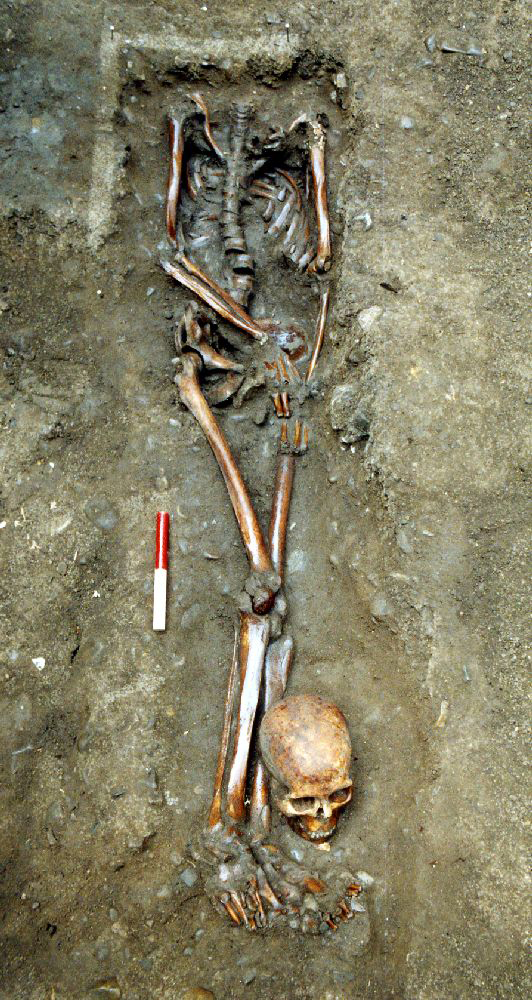
Skeleton number 8 from the Driffield Terrace excavation, a decapitated male between the ages of 26 and 35. Archaeologist's note these remains were more than 75 percent complete and preserved excellently. They also write that he had cavities. (Credit: York Archaeological Trust)
Experts in death
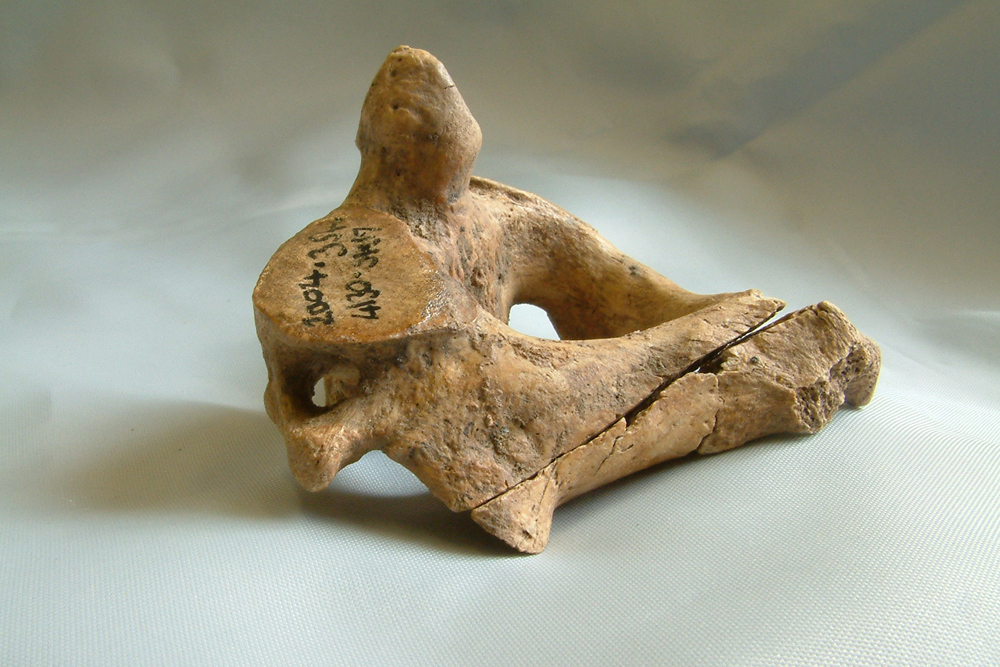
The C2 vertebra of one of the skeletons. This bone, also called the axis, is the second bone from the top of the spine. It was from a male, 18 to 27 years old when he died. He was decapitated with a single cut between the C2 and C4 vertebra. (Credit: York Archaeological Trust)
Too early for power
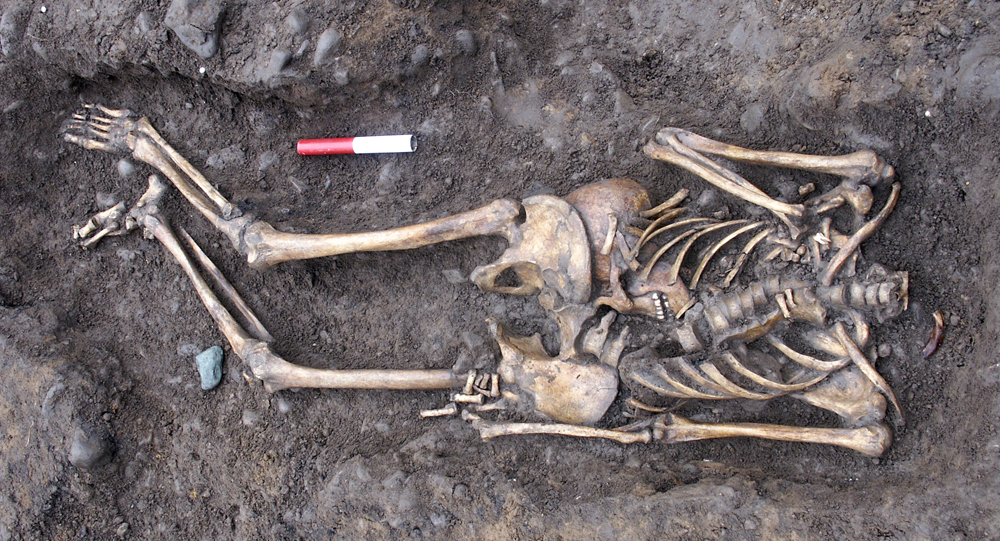
The York Archaeological Trust labeled this skeleton with the word "equites," the word for Ancient Roman horsemen. Equites were part of the Roman cavalry and, in later years, had influential political and administrative powers. (Credit: York Archaeological Trust)
Sign up for the Live Science daily newsletter now
Get the world’s most fascinating discoveries delivered straight to your inbox.
Violent death

A skeleton from the excavation that shows evidence of having been struck in the head. This skeleton is labeled "Thracian." Gladiators were divided into different classes depending on their weapons and fighting styles. Thracian was one of those classes. (Credit: York Archaeological Trust)
Multilayered history
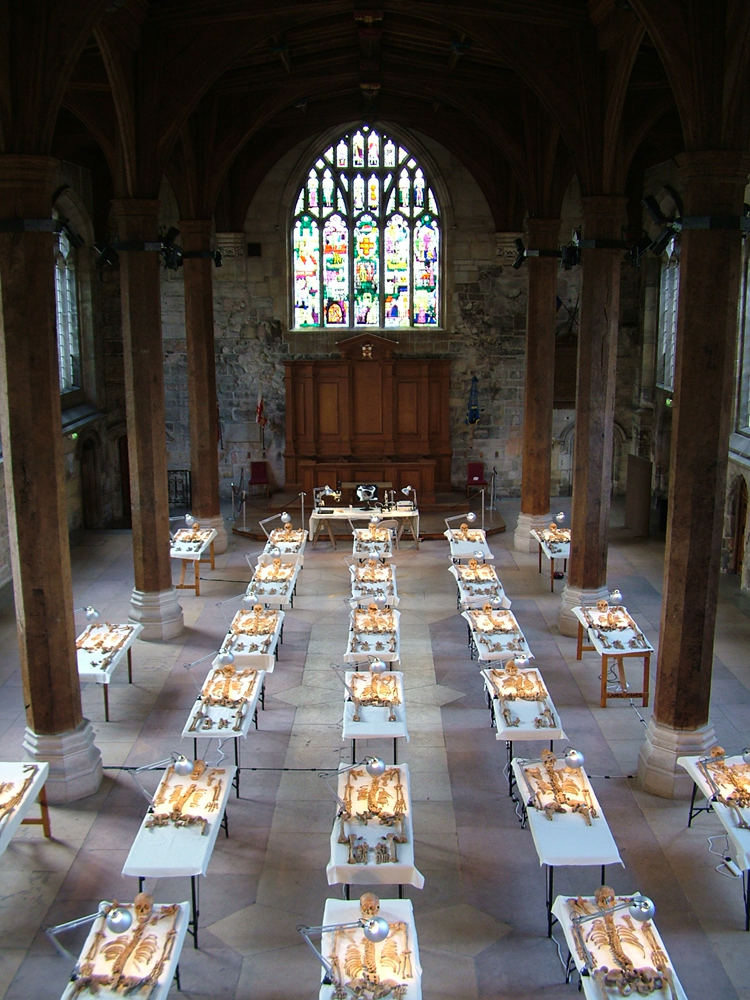
The Driffield Terrace remains are assembled in York's Guildhall, which itself was a meeting place for powerful guilds in medieval times. (Credit: York Archaeological Trust)
A difficult life
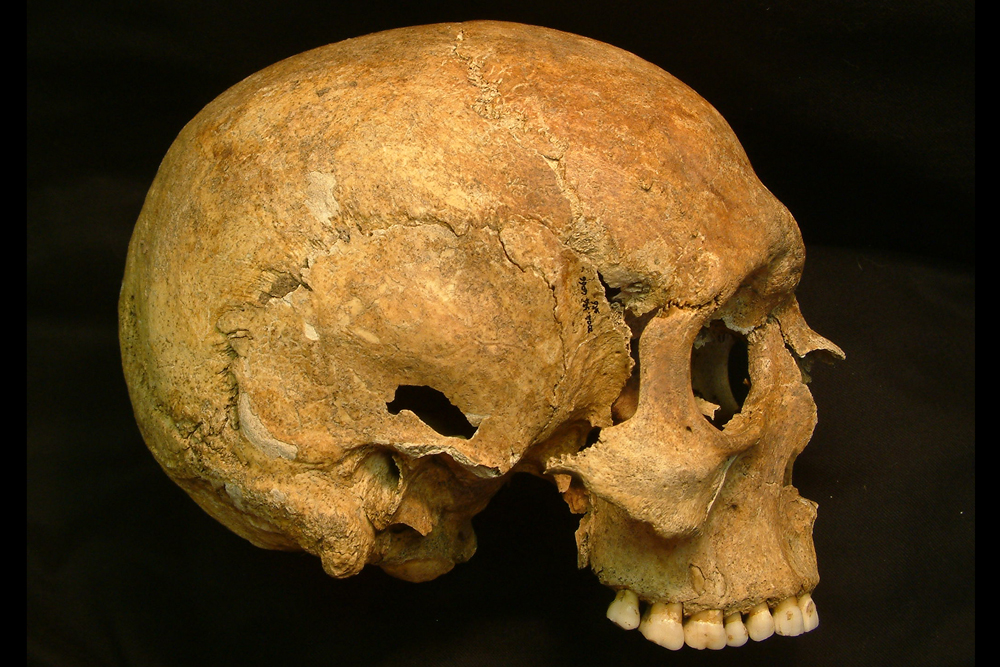
The skull of a male, age 26 to 35 who was also decapitated. He had healed fractures to his ribs and nose and possibly suffered from Osgood-Schlatter disease. (Credit: York Osteoarchaeology Ltd.)
Working from home

Kurt Hunter-Mann, the leader of this excavation, is pictured here working to uncover a skeleton. This burial site was located in the backyard of a house in York. (Credit: York Archaeological Trust)
Taking in the history

Giulia Gallio, of York Archaeological Trust, looks at the skull of one of the Roman skeletons. (Credit: York Archaeological Trust)
Ancient fighter
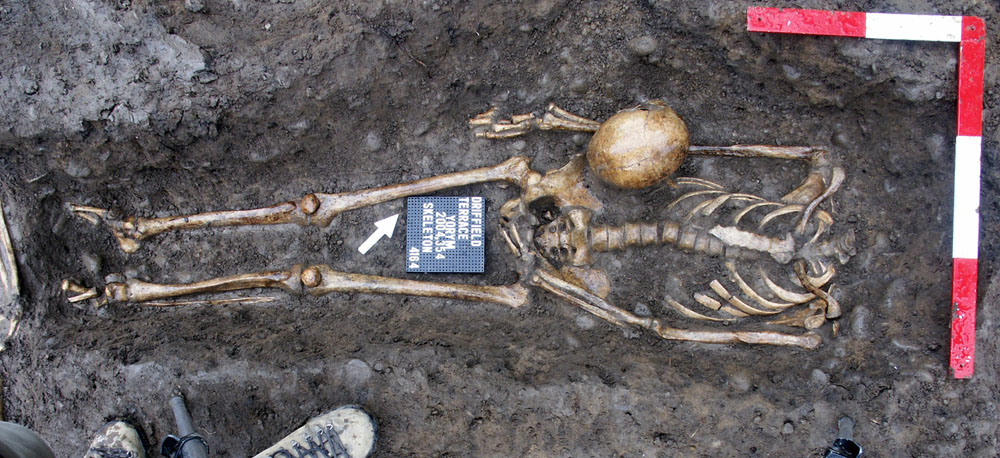
The York Archaeological Trust labeled this skeleton "long arm Retiarii." Retiarii (retiarus is the singular) were gladiators of Ancient Rome who fought with a net and spear or trident. (Credit: York Archaeological Trust)
Brutal evidence

Skeleton 2 from Driffield Terrace was also decapitated. He was 26 to 35 years old when he died. (Credit: York Archaeological Trust)
Follow Live Science@livescience, Facebook & Google+.
